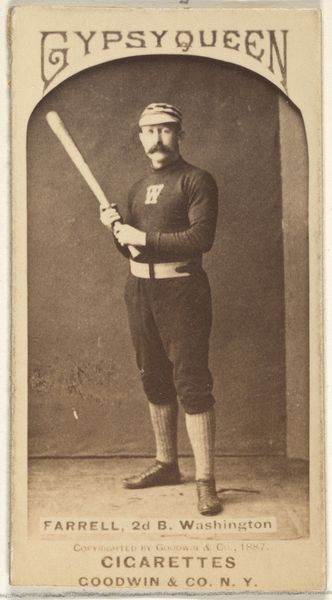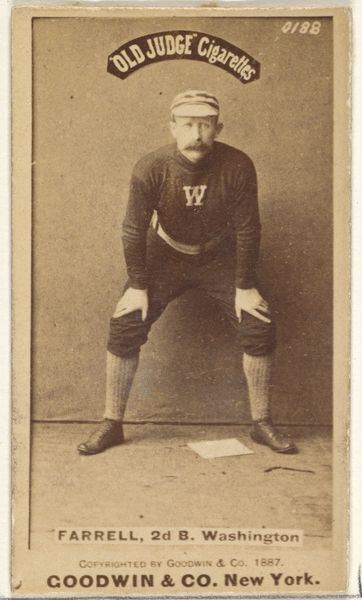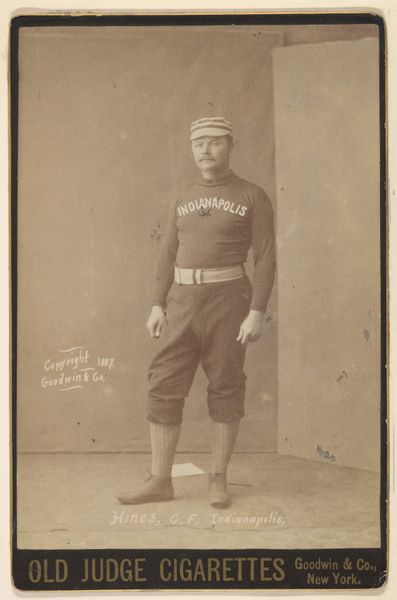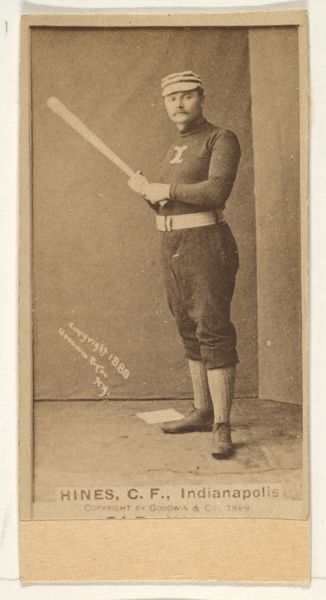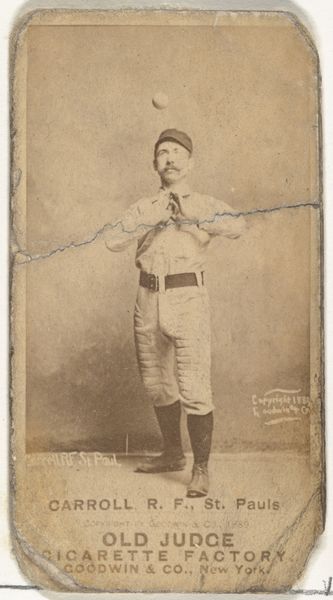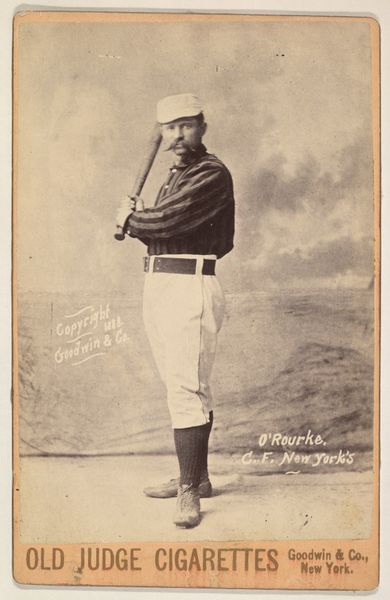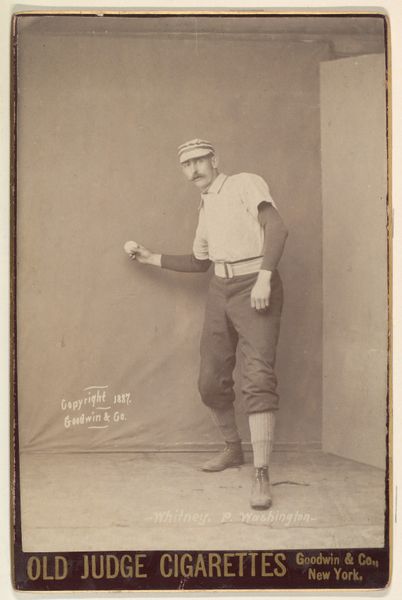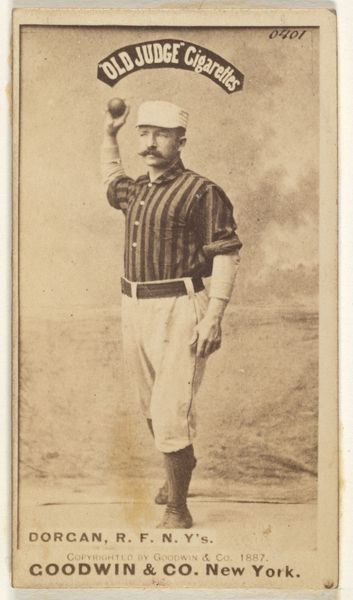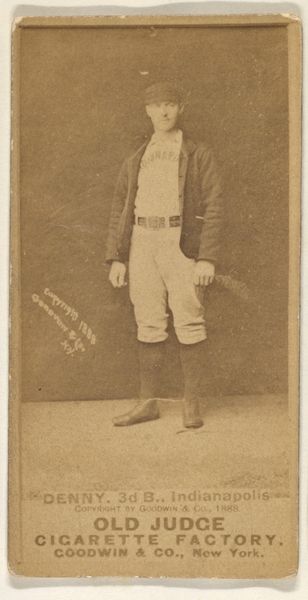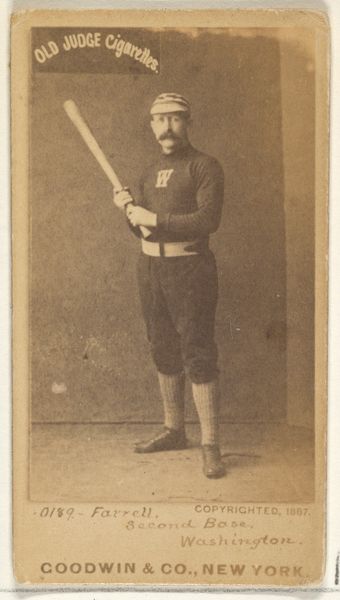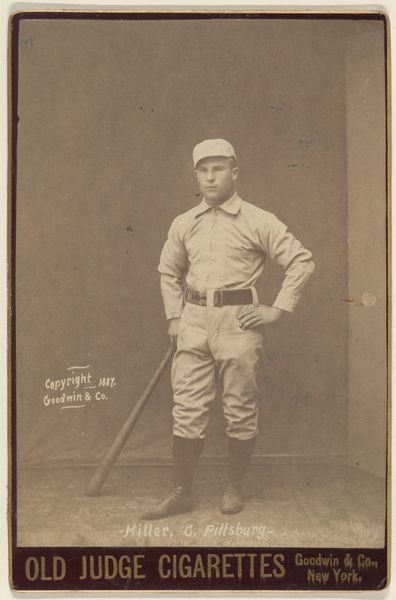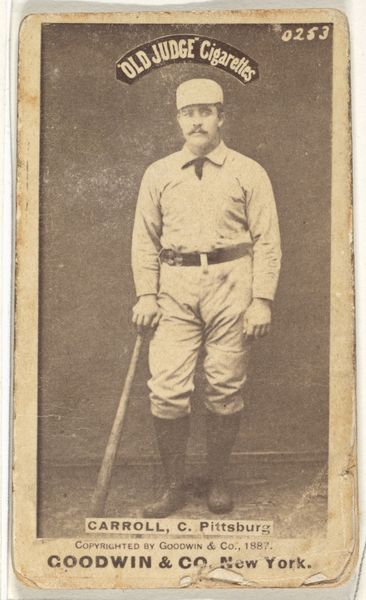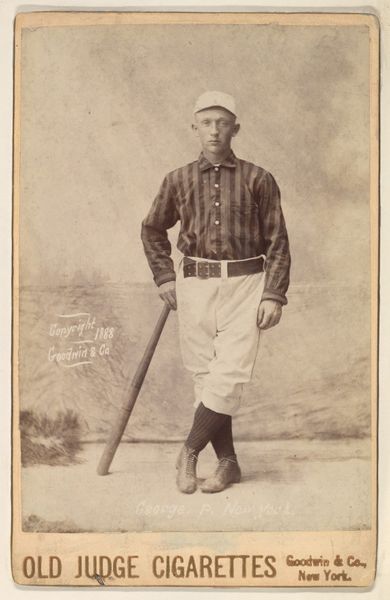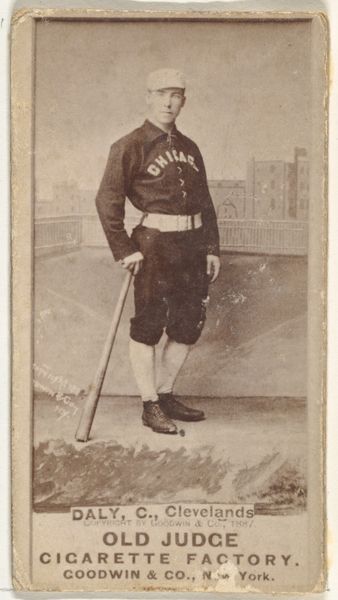
Myers, Shortstop, Washington, from the series Old Judge Cigarettes 1887
0:00
0:00
Dimensions: sheet: 6 1/2 x 4 3/8 in. (16.5 x 11.1 cm)
Copyright: Public Domain
Editor: This photograph, titled "Myers, Shortstop, Washington, from the series Old Judge Cigarettes", was taken in 1887 by Goodwin & Company. Immediately, I'm struck by the composition’s simplicity, that subdued sepia tone and the direct gaze of the subject. It conveys such quiet determination. Curator: Yes, and when you look at this portrait within its historical context, it reveals interesting aspects of mass production and consumption of baseball culture at the end of the 19th century. Think about the means of production – photographic print runs associated with consumer goods. It’s interesting that Goodwin & Company were manufacturers of these collectibles, leveraging photography for promotional gains. Editor: The subject is standing in what appears to be standard, unadorned attire with a large letter "W," the team logo emblazoned on his uniform. This "W" also introduces some ambiguity. Are we to associate it to his city, or the position he holds? Note that his baseball bat lies beside him and what appears to be an official piece of documentation is strategically placed near his feet, adding to this still-life photo of an athlete. The tones and careful placement give an unusual balance to what might otherwise have been a simple publicity image. Curator: These weren't conceived as art. It's fascinating how they blur the lines between high art and commodity. These trade cards, issued with cigarette packs, democratized image-making and created an intimate link between sports, tobacco, and American consumerism. There is certainly labor tied to all of this, from the printing and packaging process, but also with tobacco farms and the baseball team itself. Editor: Certainly. So much more than a portrait of an individual, "Myers, Shortstop, Washington" exposes cultural intersections and industrial innovation. A material trace. Curator: Precisely. The portrait allows us to look at those systems while also focusing on form, structure, light and tone as fundamental aesthetic properties. The photograph is so self-contained, so perfectly calibrated within its frame that context falls away.
Comments
No comments
Be the first to comment and join the conversation on the ultimate creative platform.
